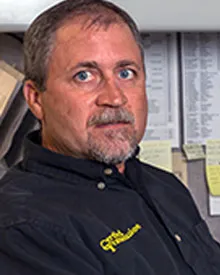Previously, fellow technician Jim Stokes provided some insight on problems that can occur both during and after a transmission installation. In this article, I would like to focus on some install issues that you should be aware of prior to selling a transmission repair. They involve additional work that may need to be done after the transmission has been repaired, and possibly requiring a sublet to another shop, or even taking it to the OE dealer.
As most people in our industry already know, the vehicles that are visiting our shops today are very complex. They are equipped with many computer controls that require multiple control units for each specific system within the vehicle. Prior to quoting or making a sale on an overhaul or a remanufactured transmission, the shop owner and/or service writer needs to know what additional work may be required to complete the job.
A full understanding of the vehicle's requirements for the repair must be considered. Most of the modern vehicles we are working on will require some type of relearn or reset procedure after the transmission has been repaired or replaced. In addition, some vehicles will require PCM or TCM reprogramming before any relearn or resets can be performed. This can be true even for minor repairs that don't involve removing the transmission from the vehicle, such as replacing a valve body or solenoid.
I know that relearns and resets are not new to most shops, and some already have the equipment to perform reflash and reprogramming operations. Unfortunately, doing it on some Asian and European vehicles can be a challenge, as most of these vehicles require a dedicated OE scan tool or software to perform the procedure. I have had many shops tell me that they have worked on several European vehicles and have never had to perform a relearn or reset after the repair was made. I'm not sure if they just got lucky, or was it because of the how the previous unit failed.
Let's look at an example of what I've discussed. Let's say that you are working on a 2001 Volvo V70 XC AWD, with an AW55-50SN transmission, and the vehicle was towed in because it quit moving suddenly. It is discovered that the transmission had a problem in the final drive area, but no other issues were found. All of the clutches were like new, and there was no obvious wear evident in the valve body, etc. That being said, the transmission was probably operating normally just before the final drive component failed.
In this particular case, the computer was not attempting to adapt and ramp up pressure for a slipping clutch, etc. This would likely be one of those cases that may road test just perfectly immediately after repair or replacement, even though an adaptive reset wasn't performed.
Let's use the same vehicle in a new example. Now the complaint is reported that the transmission is slipping in 3rd gear, spins up, but is shifting okay. The customer has advised you that it has been functioning in this manner for an extended period of time. When this unit is disassembled, it is found to have burnt clutches, worn valves in the valve body, and the solenoids don't function properly.
After the repair on this unit is made, I can just about guarantee that you will not merely be able to test drive it (without performing shift adapts), then send it down the road. This is a case in which I usually get the tech call with the common complaint of banging on the 2-3 shift, and harsh downshift clunk when coming to a stop. By now you probably know where I'm going with this, because shift adapts need to be reset and the TCM needs to be put into what Volvo calls, "Adaptive Control Mode". Some early Volvos (2001-2002 models) will require software updates to get them into adaptive control mode. The kicker here is that your latest, greatest, aftermarket scan tool will not perform this function correctly. That's right: it's now time to visit your local dealer for help. All too often, the closest dealer is 100 miles away, and the trip and dealer charges will cost you.
I'm not going to single out Volvo since most of the other car makers (whether they be European or Asian) will require some type of adaptive relearn, or TCM initialization, to make the transmission perform properly. Nissan vehicles require a TCM initialization, and in most cases can only be performed with the Nissan Consult II, or III. This is the same for Volkswagen vehicles which need the TCM set back to "basic" settings using VAG software, or equivalent, all of which may require you to take it back to the dealer for these services.
One more note regarding the TCM with regard to Volkswagen. There is a Volkswagen TSB that most shops do not know about. It involves certain models with the 09A and 09G transmission. A certain percentage of these vehicles will require an updated TCM when the transmission is replaced. For your reference, it is bulletin TT 37-06-06 which states when replacing one of these transmissions (09A or 09G) you must replace the TCM at the same time. To find out if the vehicle you are working on is affected, you will need to call your local Volkswagen parts dept, give them the complete VIN, and have them check to see if a TCM is needed when replacing the transmission. This would be another expense that you will not want to explain to your customer, "after the fact".
I hope this info has given you some insight on vehicles that will likely require additional work after a transmission repair has been performed. As I stated earlier, you will need to know exactly what you are up against, prior to quoting a sale on one of these jobs.
 Certified Transmission
Certified Transmission
